Dockstart
Dockstarting is a providential activity on beautiful days with insufficient waves or wind to enjoy a foil sesh with a surf, wing or kite foil!
It’s fun, stress free, and beneficial for your physical condition as well as your pumping technique. We strongly recommend it, ideally with friends, because you need someone to film your first dicey attempts
But don’t think that dockstarting is just for foiling pros. Under the right conditions and with the right advice, most beginners manage to cover respectable distances in their first session, after around 30 tries on average. Here are some tips below.
 Pump foiler : David, GONG staff, with a Kluber HDCC, carbon HM72 mast and Sirus set-up.
Pump foiler : David, GONG staff, with a Kluber HDCC, carbon HM72 mast and Sirus set-up.
Choice of gear
The size of your front wing is naturally decisive for your first attempts to be successful. You need foil that carries at low speed because apart from the inertia of your flying start you do not benefit from any assistance. The front wing also needs a good glide to carry you far and facilitate pumping.
We will therefore primarily turn to high aspect wings (although sessions on wings with moderate aspect, like the X-Over, can be very instructive):
- The Curve H is the most accessible front wing due to its low stall speed and ease of handling. Its high aspect offers excellent comfort in flight.
- The Fluid H is a pleasure to pump as it combines speed, control, and responsiveness. It goes fast, and its behavior in turns is smooth and predictable. It's slightly less forgiving than the Curve H but provides very intense sensations.
- The Veloce H delivers astonishing speed on the water with a slightly higher pumping pace. It’s a choice reserved for experienced foilers.
- The Veloce H Downwind offers a magical glide when pumping. It’s an excellent compromise between the speedy Veloce H and the Sirus, which provides record-breaking gliding due to its extreme ratio.
- The Sirus is the benchmark in dock start for its pumping qualities, accessibility, and record-breaking glide. Its glide offers a precious physical rest, allowing for perfectly controlled pumping. On the Sirus, you can look far ahead, and your goals become more ambitious as you glide over the water!
Remember that a load-bearing but thick profile will be more tolerant at the start, accepting very low speeds. But it will be more difficult to pump over a long distance. Here too the equipment must be calibrated according to your level. If the front wing is too small you won’t have the speed to generate even a short-lived flight on your own power, especially at the start. We therefore recommend at least XL size for average builds. To break pumping records, sizes 3XL and above should obviously be considered regardless of your weight.

Pump foiler : David, GONG staff, with a Kluber HDCC, carbon HM72 mast and Sirus set-up.
The size of your mast for pump foiling
The most efficient mast size for pumping is about 70 cm because you are in direct relation with the foil. A taller mast will give you more headroom but will be more technical to master. The loss of energy expended in control will cause you to lose all the benefits of the long mast.
The board for pump foiling
You don’t need a bulky board that would slow you down when pumping. The less volume you have, the more effective you'll be at pumping, with a more direct and instinctive connection to your foil. You need an ultra-rigid board that transmits 100% of your intentions and pumping effort to the foil. The Kluber HDCC is a board optimized for this use. However, it’s not reserved for experts. It is one of the few boards suitable for all levels. On this small format, you naturally find your position for long flights.
Kite foiling or surf foiling boards are also perfectly suited formats. Surf foiling boards have the advantage of being easy to paddle on if you fall far from your starting point.
Opt for a board made with HDCC technology or PVC sandwich construction, as collisions with the dock are frequent and sometimes severe.

Pump foiler : Valentin, GONG staff, with a Kiwii HDCC, carbon HM77 mast and Veloce HDW.
Choice of spot
The ideal is a floating dock at water level that allows you to have a few meters of momentum. The floating dock allows the tips of the front wing to pass under the dock during the dockstart. The height of the dock at water level makes it easy to manage the depth of the foil. Ideally halfway down the mast with room for the part of the wing that goes under the dock. And of course avoid the world, whether swimmers or boaters, a foil can fly on its own over surprising distances …
Ideally, choose the end of a dock that allows you to go in a straight line without having to initiate a turn from the start to get away from the dock.
Avoid algae, it is a nightmare. To be stopped dead after a good start is quite annoying…

Pump foiler : David, GONG staff, with a Kluber HDCC, carbon HM72 mast and Sirus set-up.
The dockstart
This is where it all comes down to. The best foilers manage to launch almost without momentum but you considerably increase your chances of success with speed to fly on your inertia in the first few meters. Start with at least 2-3m of run. Of course, we start with our good foot behind…
The challenge is to gain momentum while keeping your foil perfectly vertical. It’s essential. Jumping on a board with the mast tilted and you’re guaranteed a splash. As you advance during your short run along the pontoon, your foil returns pressure on your hands. For this short time, your hands are piloting your foil as your feet would do when standing on the board. So place your hands perfectly on the board. The front hand where your front foot would be, even a little further forward but no further than the limit of the pad. Your back hand goes to the tail and pushes the board, still right in the middle. When it’s time to jump on your board, your feet take over from your hands. In doing so, the board is relieved for a moment and your first pumping stroke will be a downward pumping, so with a support on your front leg to launch the foil. The position of your feet must be perfect because the slightest deviation will throw you off balance and at this low speed it is very difficult to recover from a bad stance.

The success holds in three points: speed, perfectly straight foil and a very precise jump to your stance. Every gesture must be perfectly executed. Gaining speed in that short run often results in a loss of precision in your movement. So stay focused on your run and it will be fine, or not, but it’s just water 😉
If the start is successful, the focus should immediately turn to pumping and managing your breath, and that’s another story 😉 The whole point of the sport actually!!!
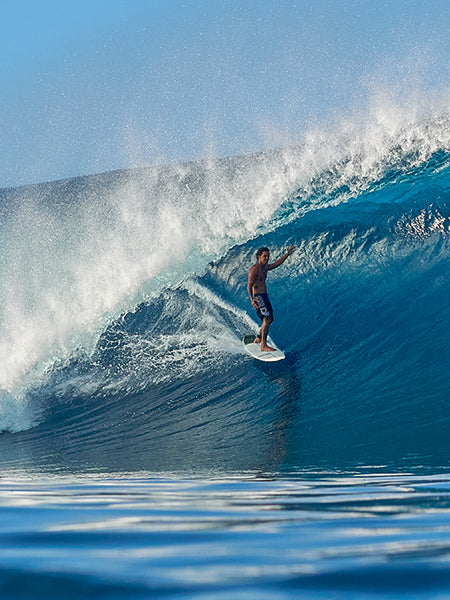
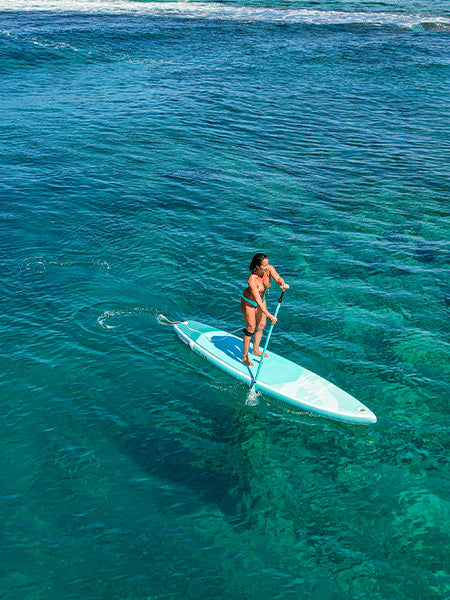

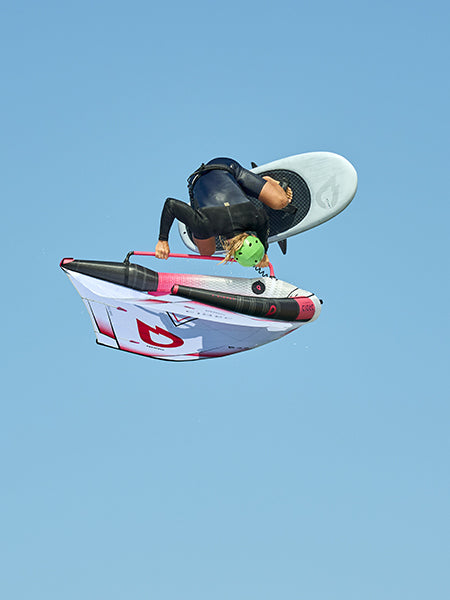
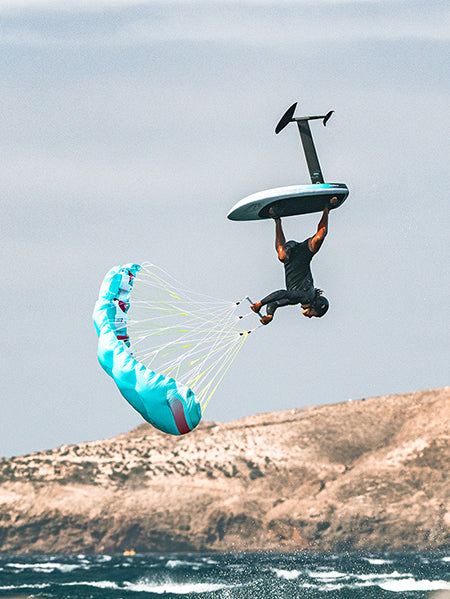
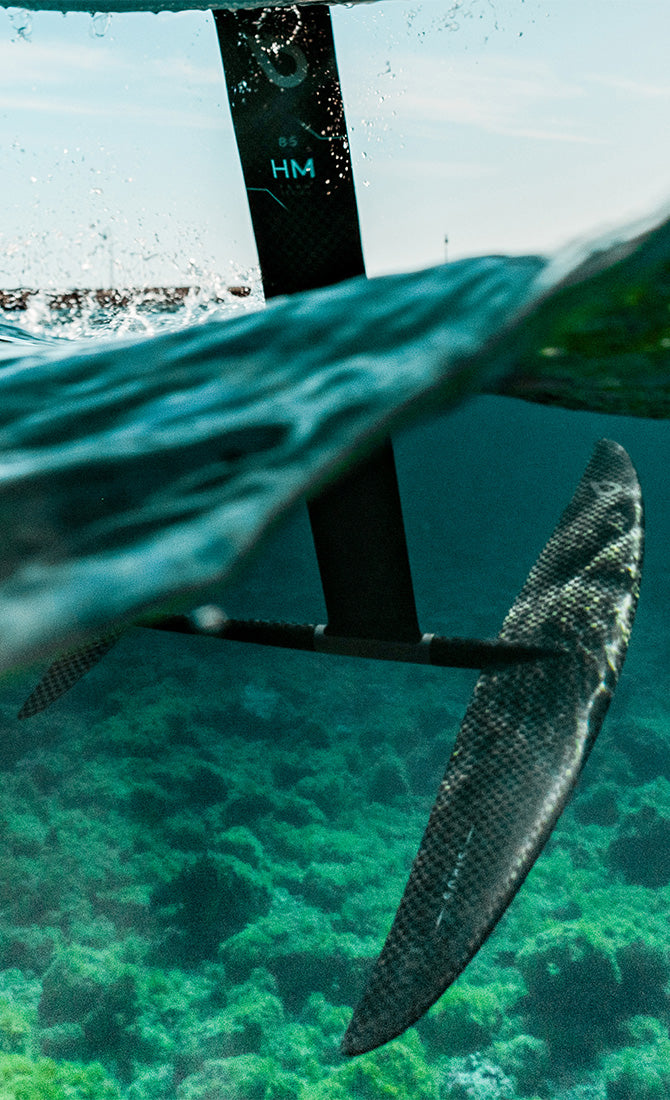




2 comments
For keeping your foil perfectly vertical find the right mast position, than the foil will rise (if it is big enough and you start with sufficient speed). Try to keep the foil at the start short under the water surface (you final push will so translated in more speed).
Pour les débutants, je trouve qu’un départ sans saut ni jamais de perte du contact avec la planche est beaucoup plus facile que de sauter et réussir un lancé. Le lancé ça fait un compétence de plus à assimiler.
https://youtu.be/OZekb3nL2oc